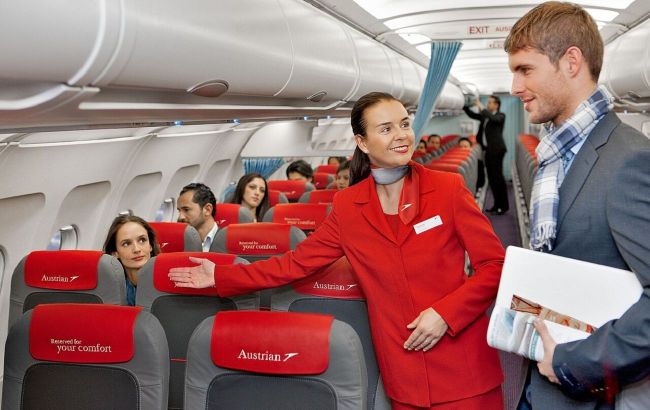8 true facts about air hostesses that will make you both admire and worry
 How stewardesses were selected and trained (photo: Wikipedia)
How stewardesses were selected and trained (photo: Wikipedia)
Air hostesses are not just the face of airlines, but professionals who ensure the comfort and safety of passengers. At different times and in different countries, the selection and training of flight attendants was treated differently, and some of the requirements may seem strange or even shocking to a modern person.
The first flight attendants were nurses
In the 1930s, when the flight attendant profession was just emerging, airlines hired only nurses. It was believed that they could provide medical care to passengers during the flight. For example, in the United States, the first stewardess, Ellen Church, was a registered nurse, and it was she who proposed the idea of hiring women to work on board.
"Attractiveness" tests
In the 1960s, many airlines used to have "attractiveness" tests. Candidates had to pass an interview, during which their manners, voice, and even the shape of their feet were evaluated. For example, at British Airways, flight attendants were forced to wear short skirts to emphasize their figure.
Swedish flight attendants of the 60s (photo: Wikipedia)
Age and appearance restrictions
In the 1950s and 1960s, only young, unmarried women with perfect looks could become flight attendants. For example, Pan American World Airways required candidates to be no older than 26 years old, weigh no more than 60 kg, and be between 160 and 170 cm tall. Women were often fired after getting married or having children.
Endurance training
In the 1950s and 1960s, flight attendants were trained for endurance. They had to be able to work under extreme stress, for example, during turbulence or in the event of an airplane malfunction. During training, they were taught how to evacuate passengers in 90 seconds, and even how to behave in the event of an explosion on board.
In the 1960s, flight attendants wore miniskirts on some flights in the United States (photo: Wikipedia)
The ban on marriage
Until the 1970s, many airlines had a ban on marriage for flight attendants. If a woman got married, she was fired. This rule was due to the fact that airlines considered unmarried women to be more "attractive" to passengers.
Tests for psychological stability
In the 1980s, flight attendants in Japan were subjected to rigorous psychological tests. They were tested for their stress tolerance, ability to make quick decisions, and even their ability to remain polite in conflict situations. This was due to the high standards of service in Japanese airlines.
.jpg)
Singaporean flight attendants in national uniform (photo: Wikipedia)
The ban on glasses
In the 1970s, many airlines banned flight attendants from wearing glasses while working. It was believed that this spoiled their appearance. If a woman had vision problems, she was offered contact lenses, which at the time were not as comfortable as they are now.
Modern standards: focus on safety
Today, the main focus of flight attendant training is passenger safety. They take intensive courses in evacuation, firefighting, and first aid. Appearance and age are no longer key criteria, and the profession has become accessible to both sexes.
Earlier, we wrote about 10 not-so-pleasant facts about air travel that are hidden from passengers.
Read also, what are the 9 reasons why a traveler may not be allowed on an airplane.
Sources: Simpleflying.com, Lifehacker, Wikipedia.

